After I was excited to getting a tour in Beneteau´s newest breed of the Oceanis cruisers, the 46.1, as Clemence Bercault, chief of the Oceanis line was walking me through the boat (read this article here) I was especially excited to finally come to sail one of these last week. Can the boat´s performance and seagoing properties live up to the high standard of her modern, spacious interior?
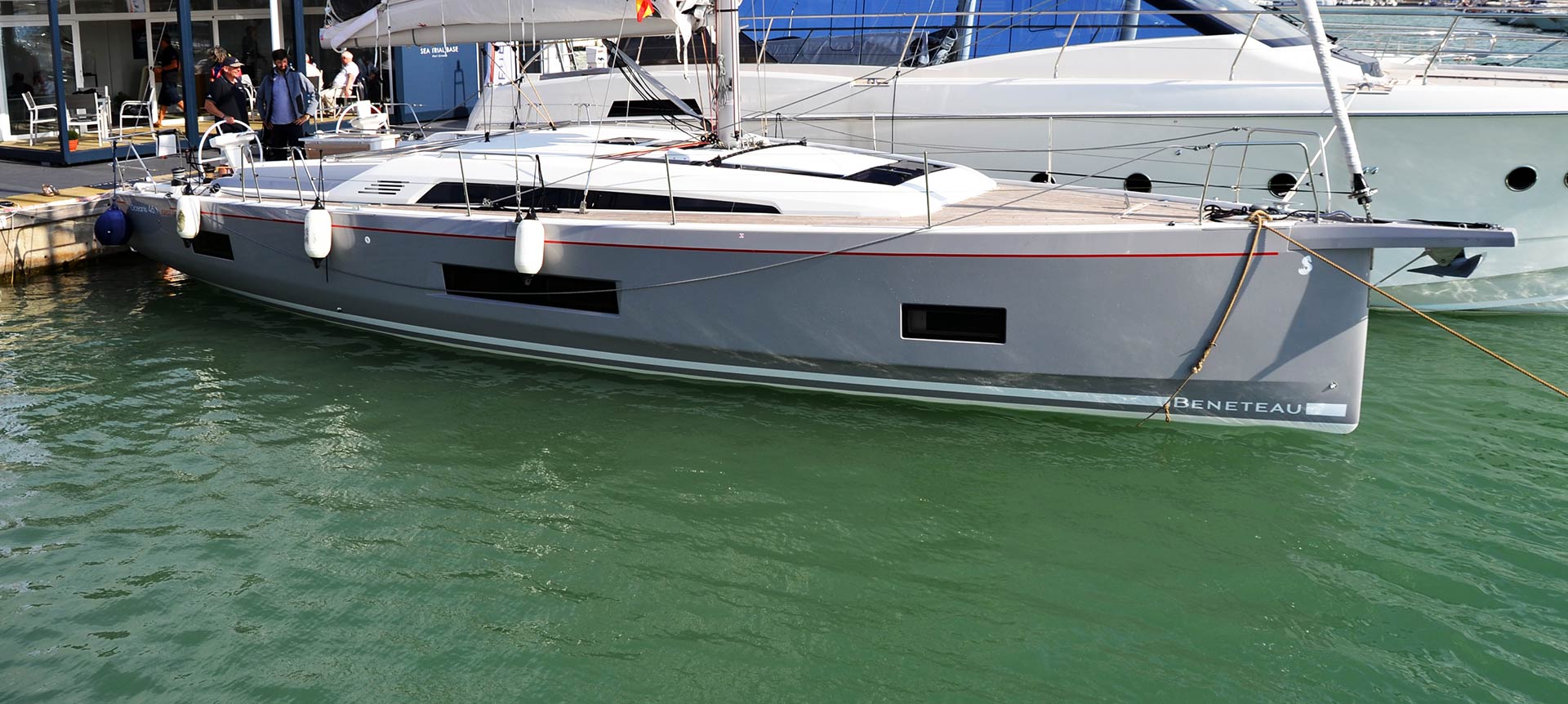
It was blowing hard in Port Ginesta, no 15 minutes by car from Barcelona airport, when I arrived. No good time for sea trials, as the skippers of the yard signal: Just outside passing the breakwater of Ginesta harbour some 25 to 30 knots of winds and seas as high a four metres were building up – so I´d had to wait a full day as none of the boats where leaving their moorings that day.
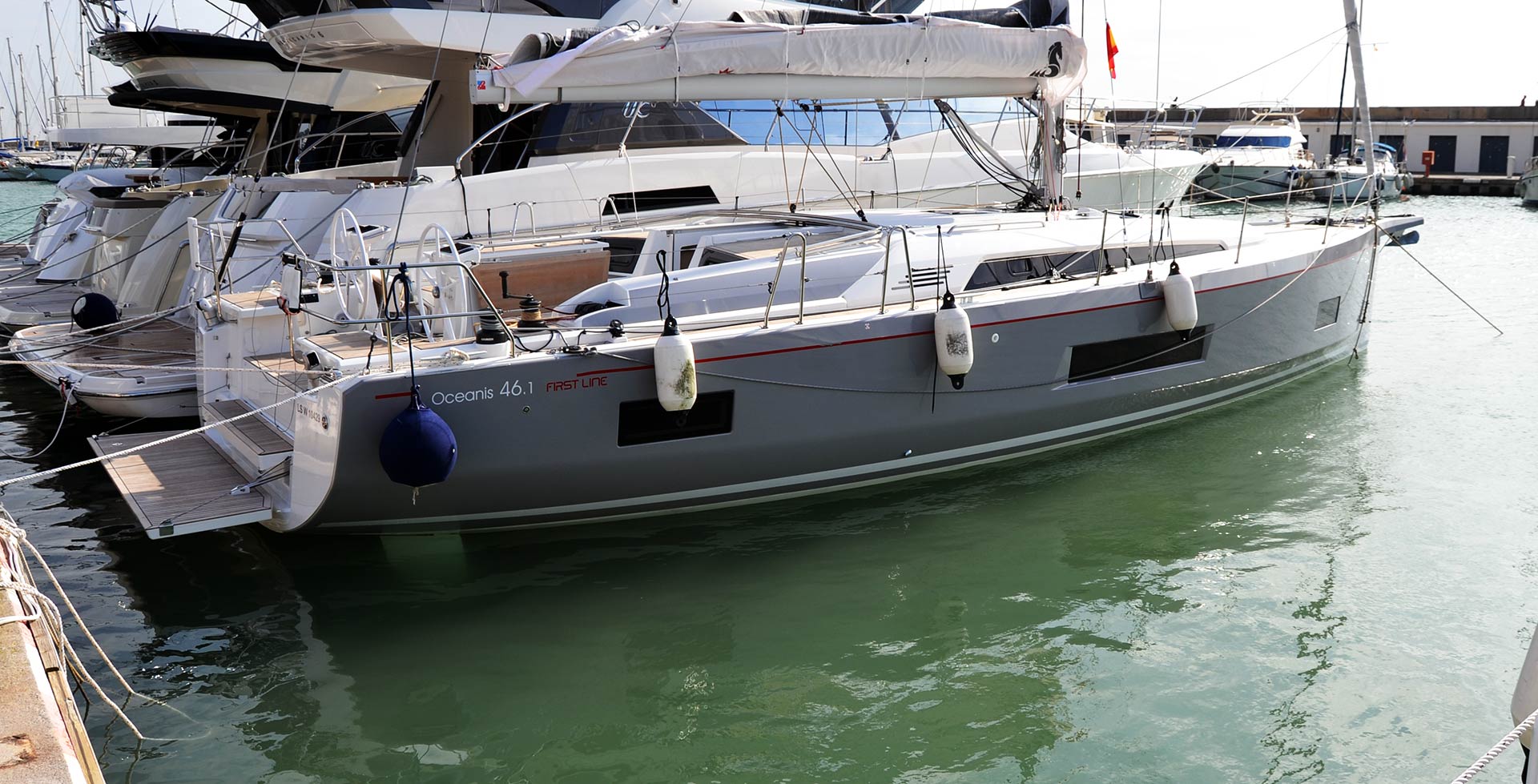
A good chance for me to have another thorough look at the boat: With a length over all of 14.60 metres including her bow sprit (which is standard!) she is 48 feet long. Herr hull measures 13.60 metres in length total, which is 45 feet. Truth is, as Beneteau´s designers told me, that her internal volume and the measurements of galley, cabins et cetera are actually exceeding these of the Oceanis 48 which went out of production alongside Oceanis 45 to make room for the new boat. Impressive!
Nice flat design: Perfect view
Of course, the new Oceanis 46.1 boats the elegant and yet ingenious application of the forward chines (which had been introduced with the Oceanis 51.1) – and these are responsible for the great increase of internal volume – yet without sacrificing sailing abilities, as they tell me: The wetted surface and the form of the hull underwater remains slim and nicely cut. No compromise for the sailors. We will see, I think to myself, as we are finally casting off the following day.
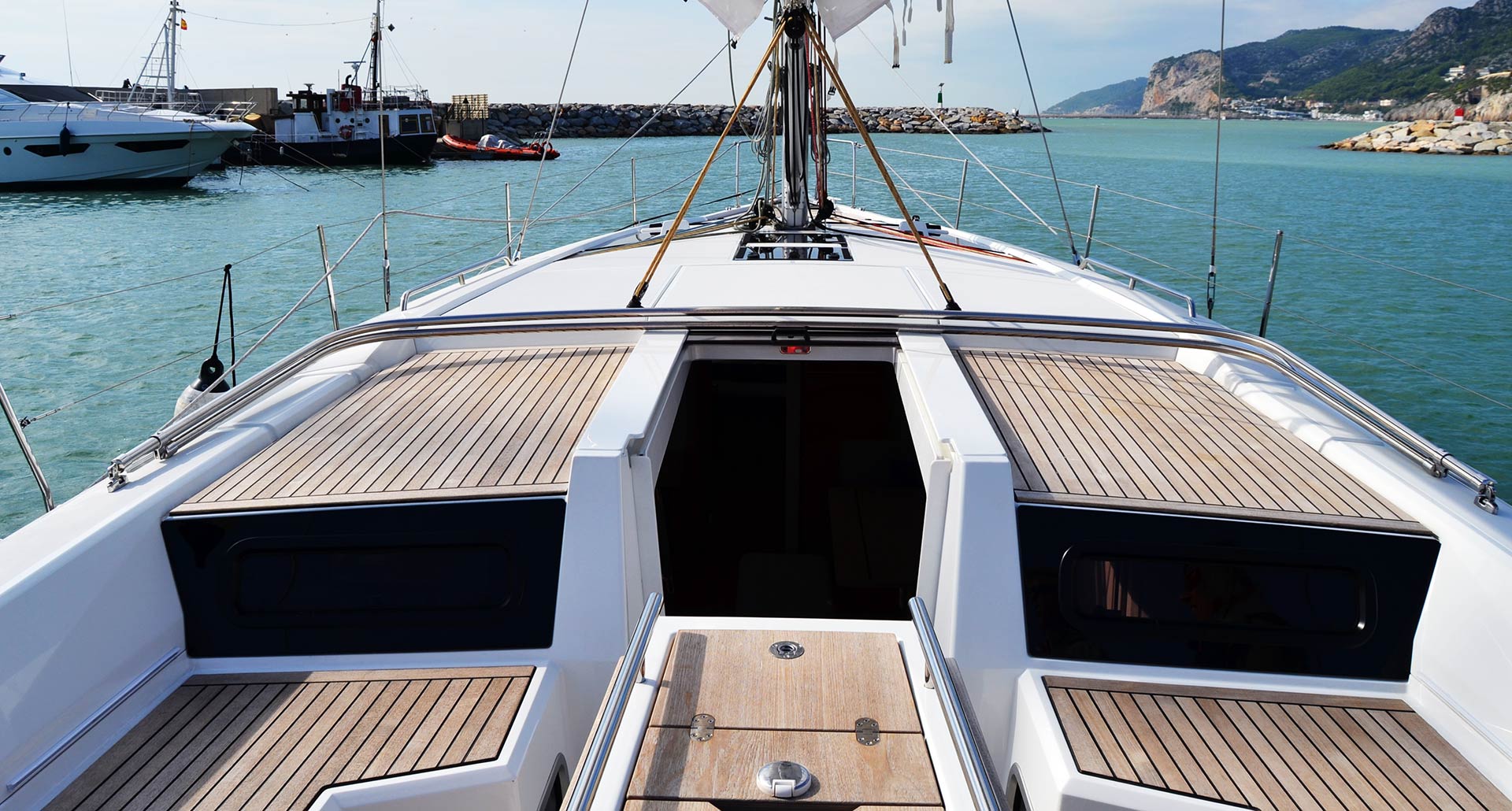
We boarded the Oceanis 46.1 “First Line” which is one of three concepts of the 46.1 – deep keel, taller mast with more sails area, no mainsheet arch and a “racy” look. That said, standing at the wheel leaving harbour, I enjoyed a very, very good view over the boat. Of course, we didn´t had the sprayhood up, but nevertheless, the clean uninterrupted sight reminded me of the nice, elegant and flat deck of a Solaris sailing yacht.
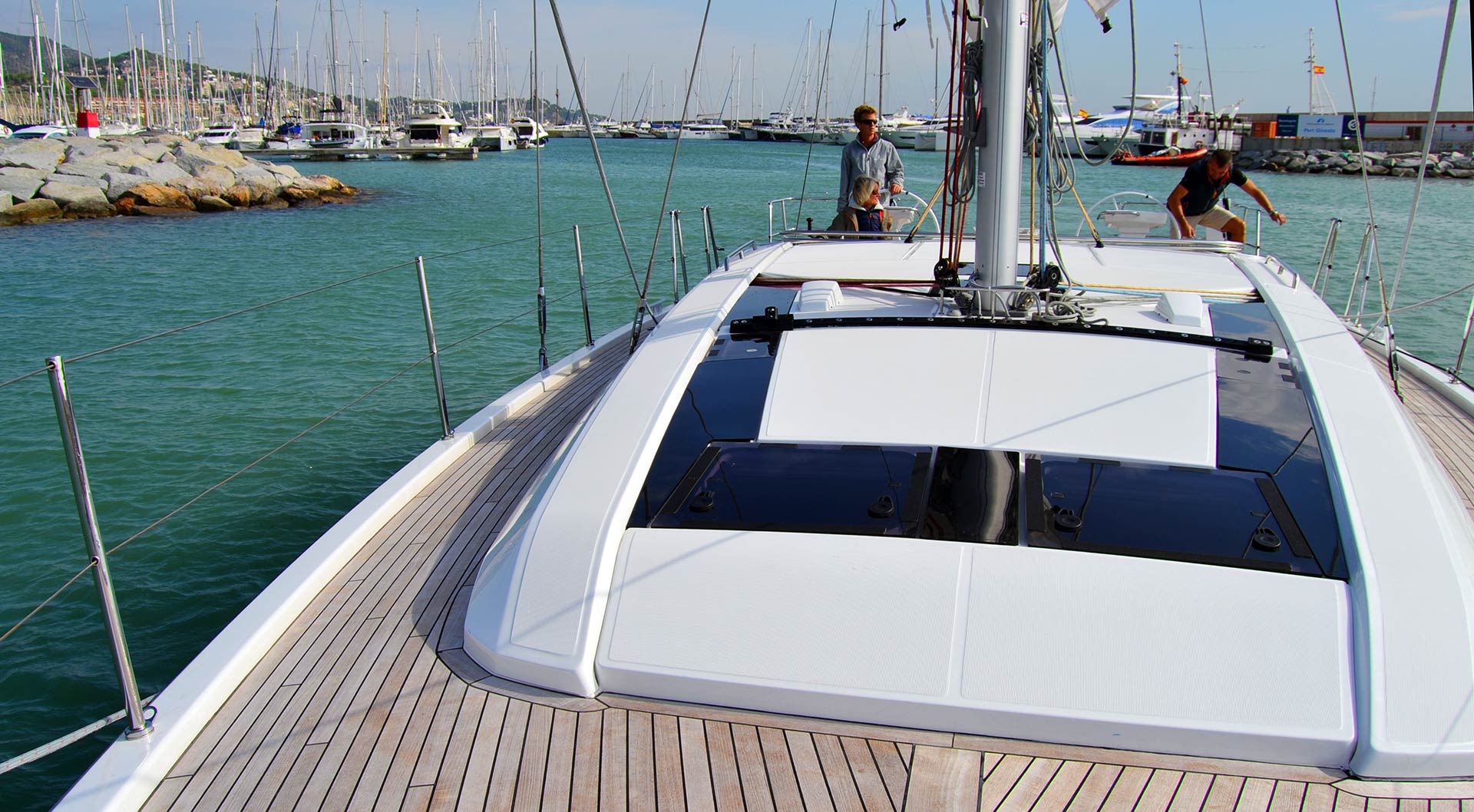
Standing on the bow looking abaft I also enjoyed the nice flat design: As all new .1-Oceanis boats, the 46.1 comes with a edgy, slightly aggressive design. The U-shaped skylights are a very nice signature design feature (and providing lots of natural light to the salon). The inner shrouds are places to the inside of the gangboards of the deck which allows for an uninterrupted free passage between the. Nice. The Oceanis 46.1 can be equipped with a self tacking jip and/or an overlapping Genoa on nicely long tracks. “My” boat for the day had the Genoa rigged.
Oceanis 46.1 First Line or Cruising version?
The difference the new 46.1 is making is more than just this. For the first time a yard was truly “listening” to what the market wants and has adapted the product accordingly: To define the standard fittings of the Oceanis 46.1, Beneteau analysed all the past purchased 45 and 48 boats and was putting to the standard what was chosen by 70 to 80 per cent of the sailors. That means, that the standard Oceanis 46.1 has an in-mast main sail, self tacking jib, 3 cabin/2 heads and 57 horsepower engine. But for today, with still 13 to 15 knots TWS I was happy being on the “First Line”.
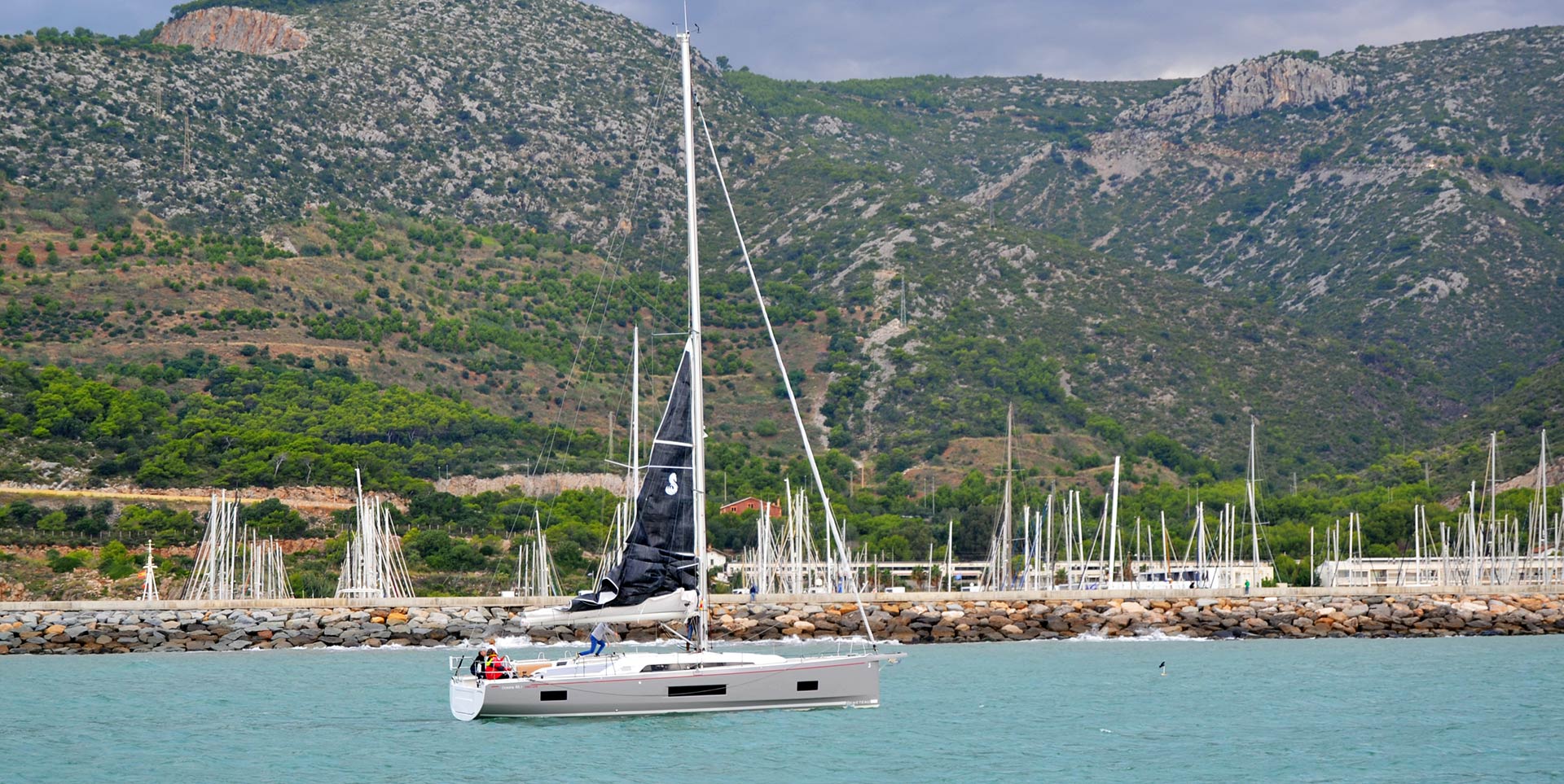
With still quite a nice swell coming in from North-East the boat was rocking gently up and down as we put her nose in the wind and had the nicely cut laminate mainsail hauled up by the electric winch (standard with the “First Line”-boats). Effortless push button sailing. The secondary winches on this very boat had been fitted electrically powered by her owner as well, which undoubtedly is an increase in comfort, but from my own personal point of view – a decrease of fun). Nevertheless, I give credits to Beneteau offering such a wide range of choices for their clients. No wonder that the Oceanis is now in her seventh generation and, I I can believe the French guys from the yard, Oceanis yachts are the most sailed, most numbered and thus most successful ocean cruising yachts to ever roam our oceans.
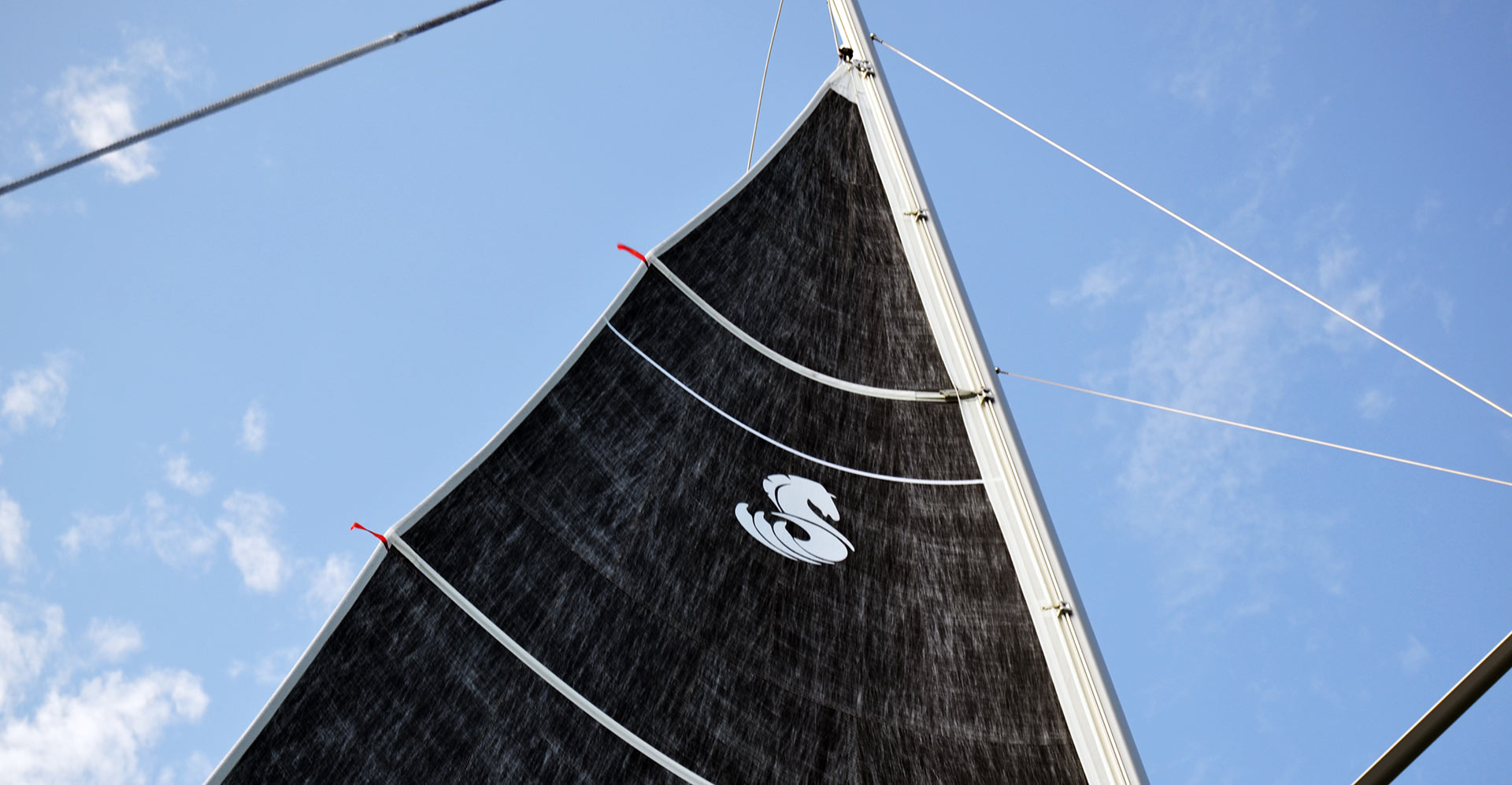
We finally had up our sails, although in the first reef. With standard furling the Oceanis 46.1 can deliver 89 square metres of upwind sail area in the standard furling/self tacking jib-version. That´s increased to 112 sq. metres if the owner chooses the classic full-battened main with the Genoa and will finally end at 120 sq. metres on the “First Line”. I am a bit disappointed that we´d have to go out in a reef so that the data I am gathering are a bit adulterated, but that´s sailing …
Speeds of the Oceanis 46.1 at all points of sail
My disappointment lasts only seconds. The moment we bear away from the wind and our main sail gathers some air, the boat instantly heels slightly, jumps to speed and is stabilized right away. Getting out the Genoa (as said, reefed) is a matter of seconds and again, the boat accelerates even further. Out two skippers from the yard push two buttons to trim the sails and off we are – upwind, sailing the new Oceanis 46.1.
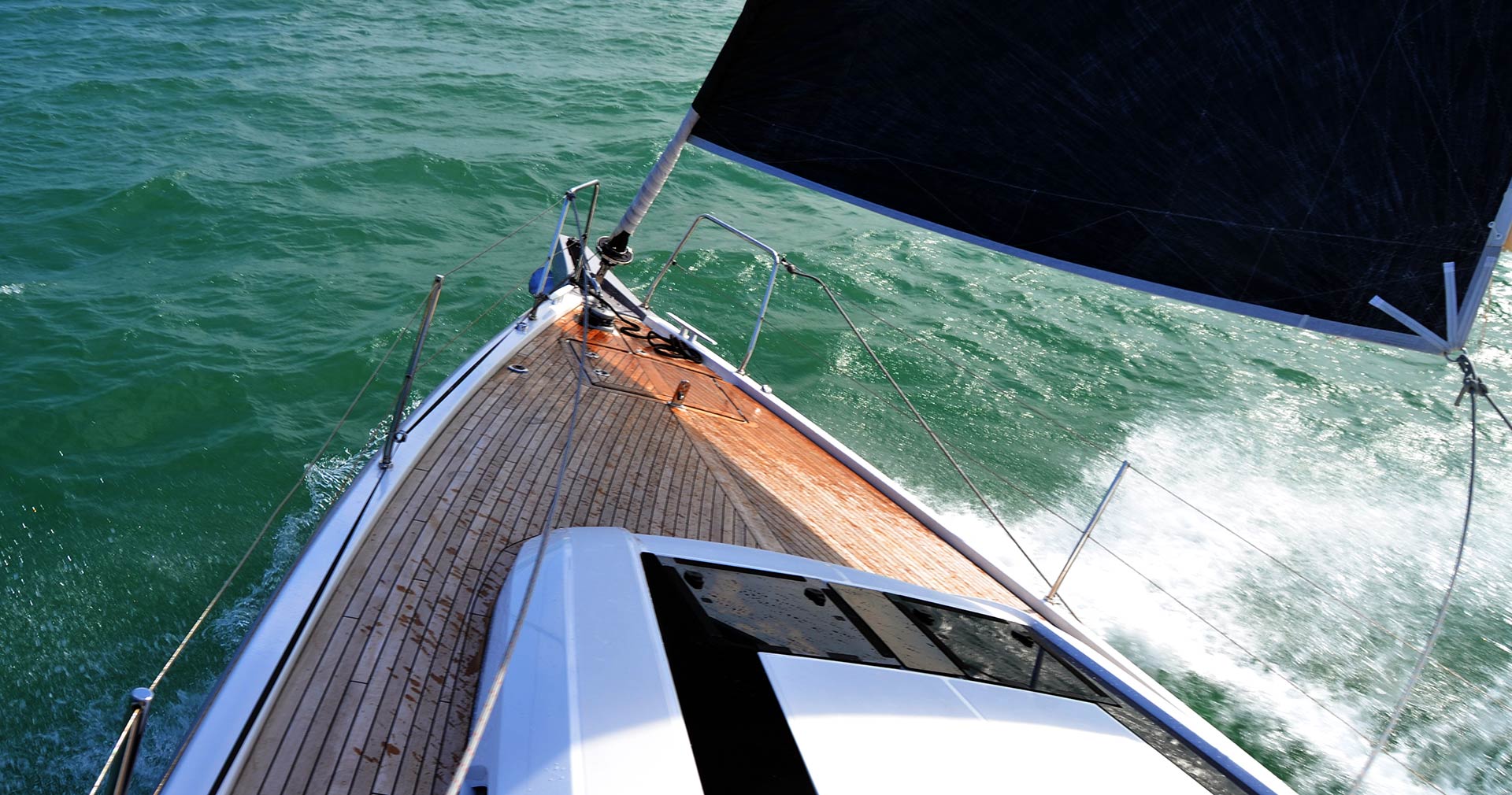
She is a bliss upwind! Smooth motions, nice up and down although we are hitting the waves quite hard, there is no rocking, no bouncing off the waves: That´s because the designers managed to keep a nice V-shaped bow section and have the forward chines beginning above waterline. So her sailing abilities remain untouched, yet internal volume multiplied. I scream to my voice recorder: “Upwind … 12 knots wind speed … boat makes 7.6 to 8.3 knots over ground …” I would say, that´s quite nice – concerning we have one reef in our sails and quite some swell hitting our bow from directly ahead.
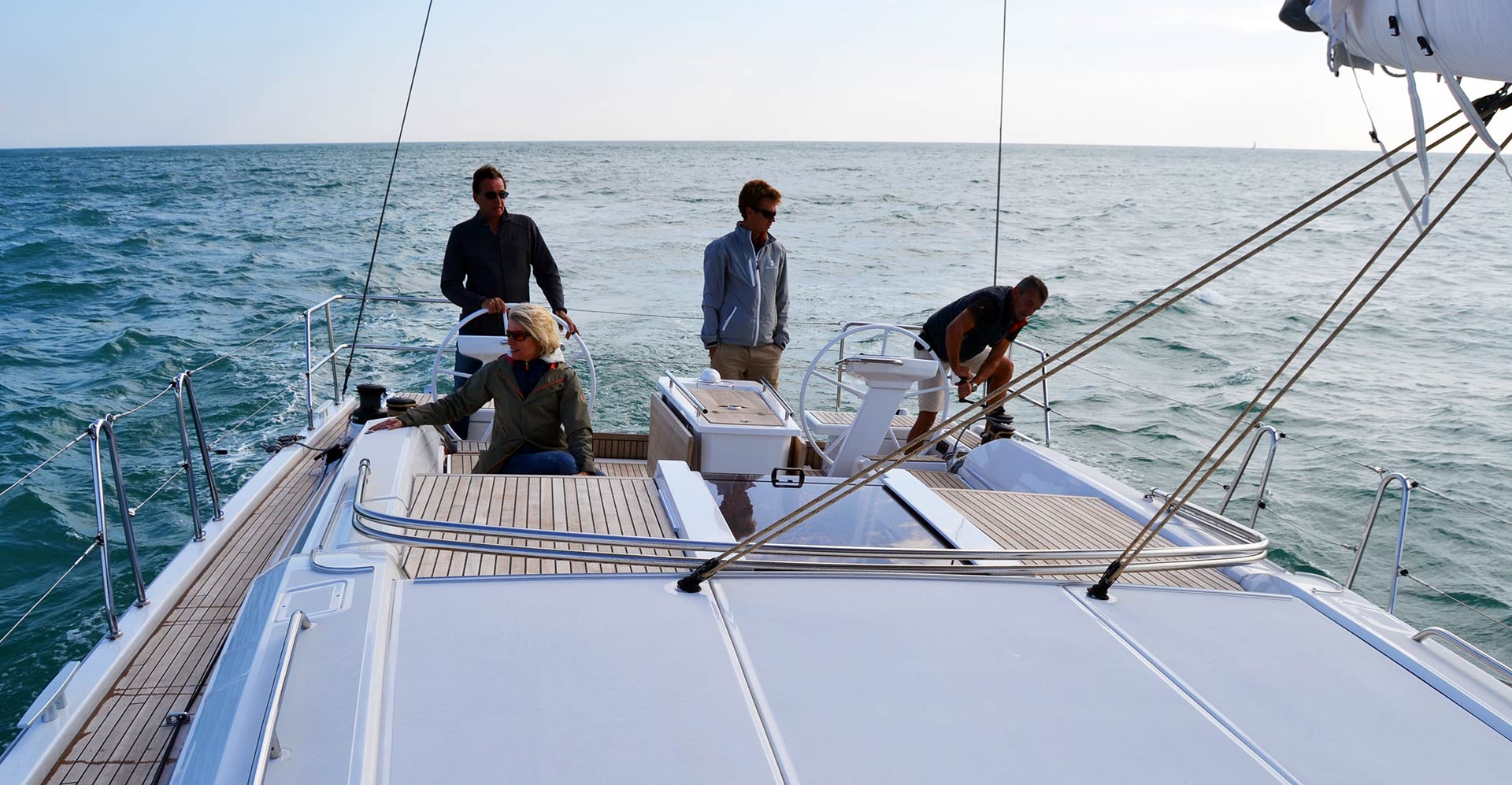
We are doing a tack. Which is a simple manoeuvre: Hard rudder to turn the bow fast and put the hull through the wind, the boom comes over nicely without any noise and the Genoa sheets change side even more easily. No problem at all. You can program the auto pilot to turn with a distinct turn-rate and perform this manoeuvre single handed with no problem. A tack lasts less than 3 seconds on the Oceanis.
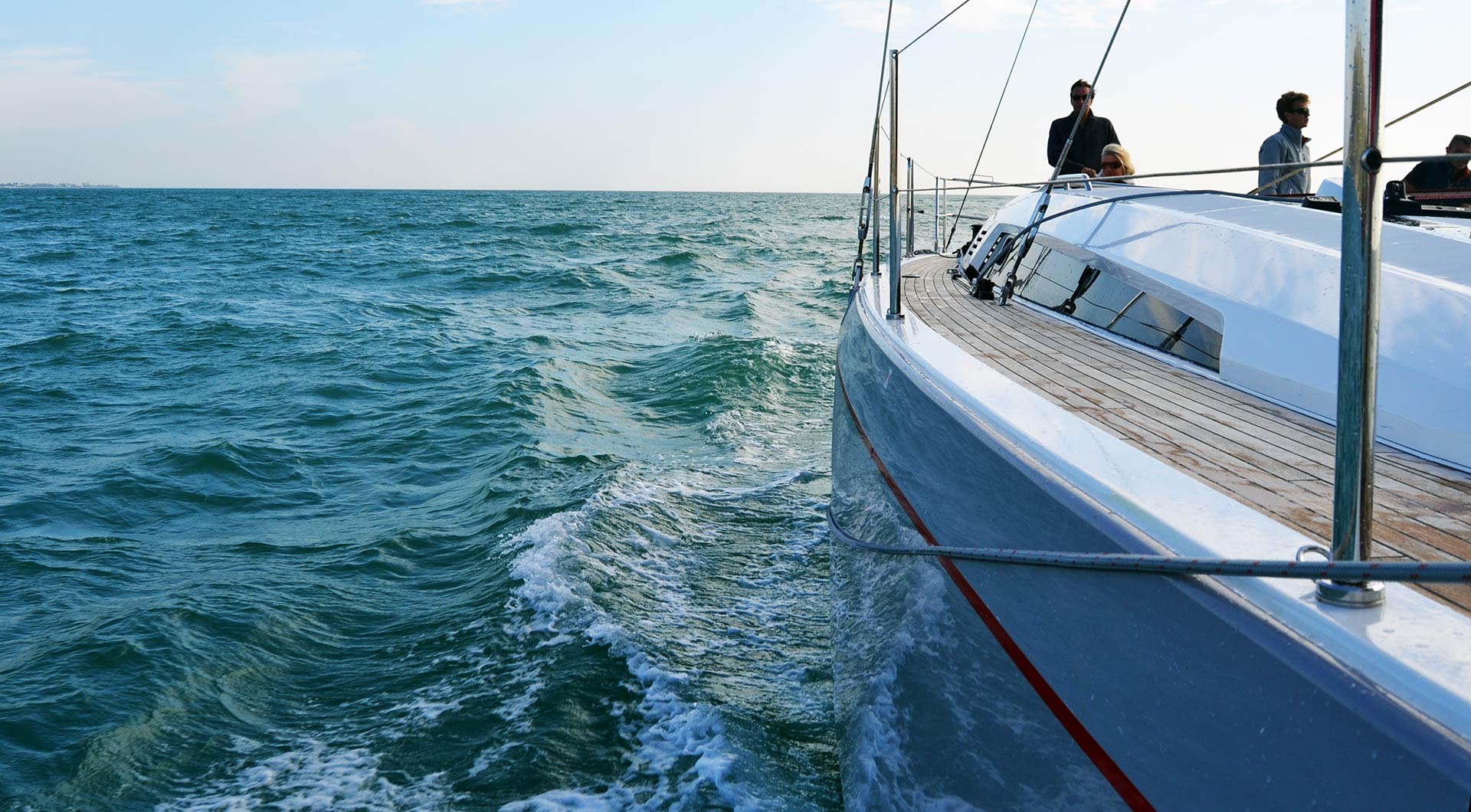
God save the electric winch, says our skipper, as we perform some gybes afterwards. Hauling in the main is a pain in the ass when cranking manually. Thanks to the electric winches the main is clause hauled in a matter of seconds without any stress, the boat turns her stern through the wind slowly, Genoa changes sides and the main is slacked immediately – smooth, no noise, no hassle. Love it!
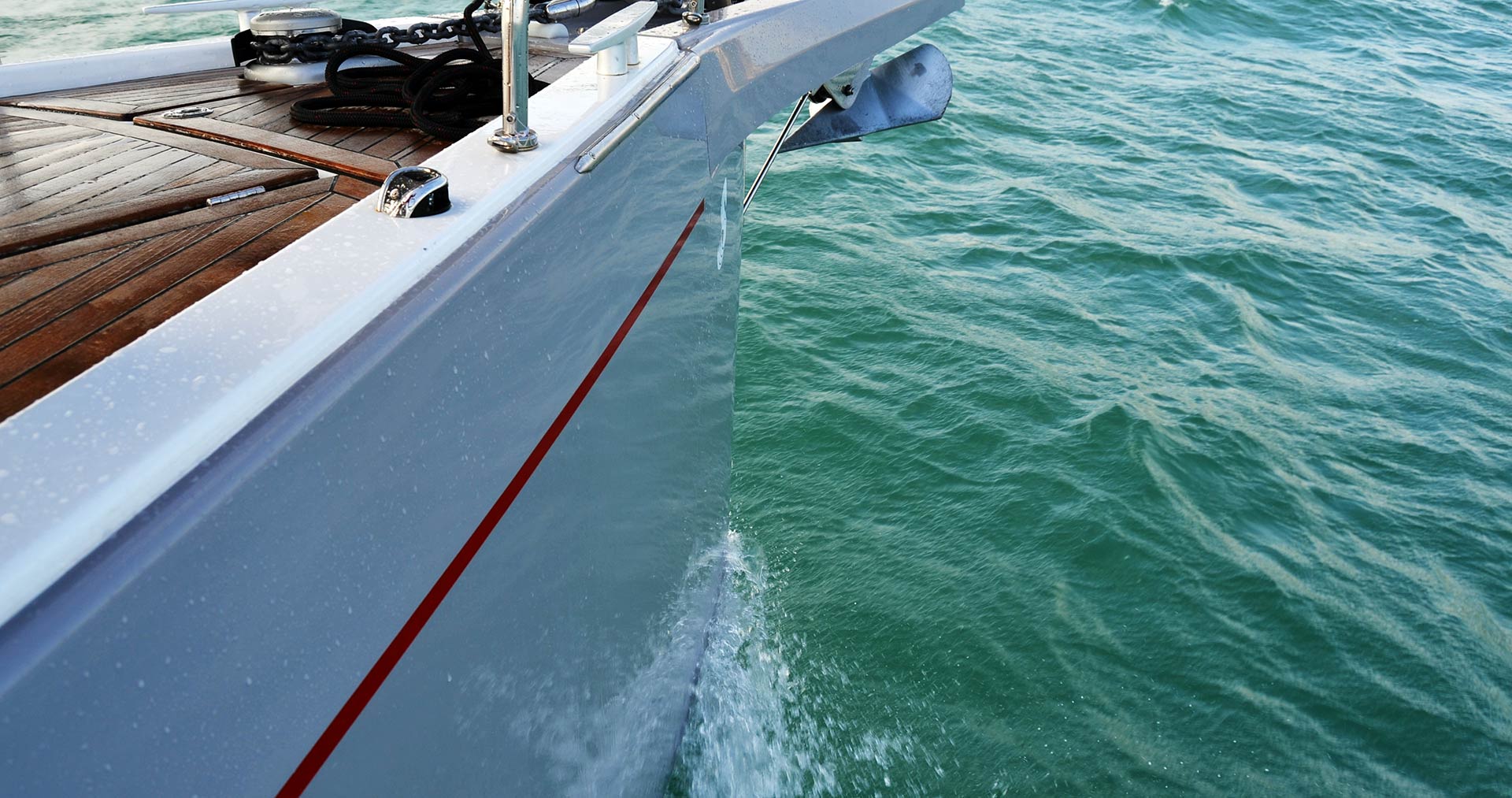
On running other points of sail the Oceanis 46.1 behaves similar impressive: Beam reach (wind has dropped to mere 9 knots true) the boat sails along with 6.2 to 7.4 knots over ground, which is okay considering the fact that we are still in the first reef. Unfortunately one of our guests aboard began to suffer from sea sickness due to the large swell so we had to abort the sea trial and head back to the marina, nevertheless, we tried some tacks and gybes down the way to get a further feel for the boat.
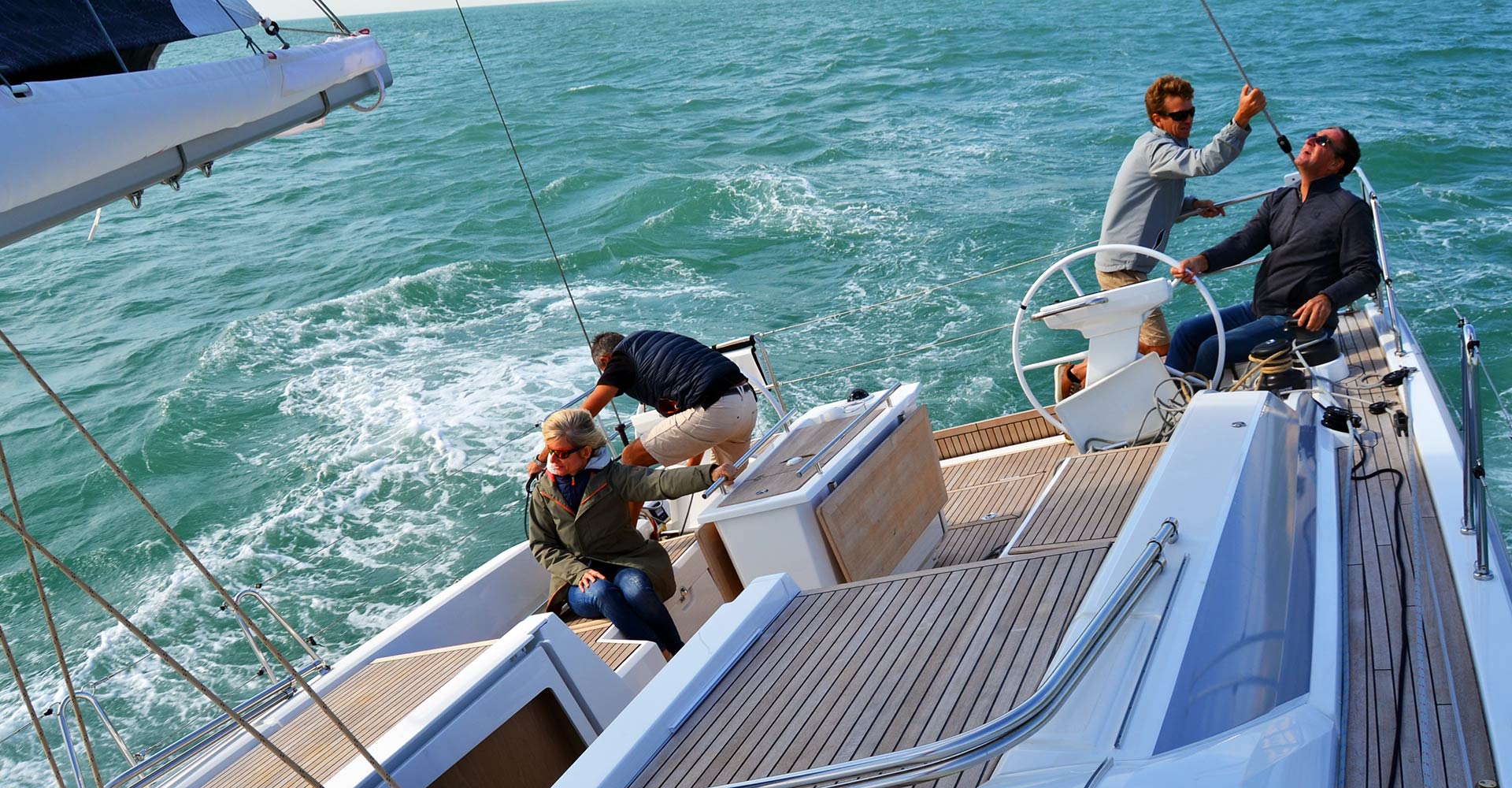
Even running flat before the wind I never felt this uncomfy “swinging” of the boat. Back on my Atlantic Ocean sailing-experience last year when I was delivering a 46-footer to the Canary Islands we were as well running mostly in the trade wind with waves from abaft: The boat tended to break out right when the wave was passing underneath us, kind of reversing the flow of water along the rudder blade. Not so here on the Oceanis: Even when the waves raised our stern and passed, the boat never really broke out from course and I only had to correct kindly at the wheel.
Being a helmsman on the Oceanis 46.1
Which brings us to the steering properties of an Oceanis 46.1 – and these are quite nicely done. First of all in standing position behind the wheels (on this “First Line” the white composite wheels are standard, by the way), the view is just perfect. The wheels are mounted on a massive, solid stand and the height and size of the wheels are just fitting nicely to any helmsman.
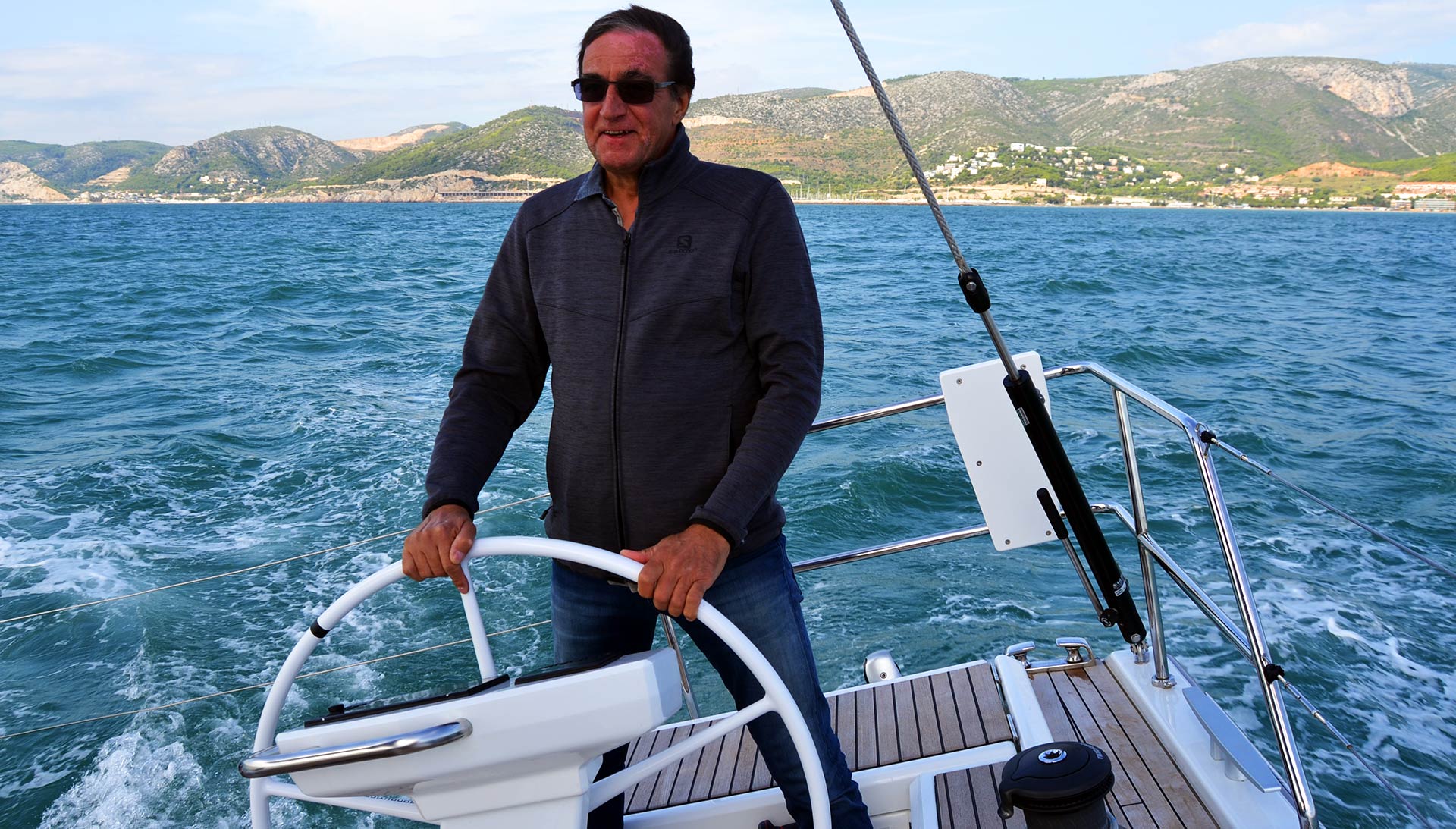
When the boat is heeling, footrests can be folded to provide an even standing position, which might be an old hat but it increases dramatically the comfort of the helmsman. I remember being on an Oceanis 48 during a regatta and we skipped having the rests folded out due to the fact that we´ve had to perform so many manoeuvres all the time – my feet began to hurt soon as standing on a tilted surface is of course unnatural.
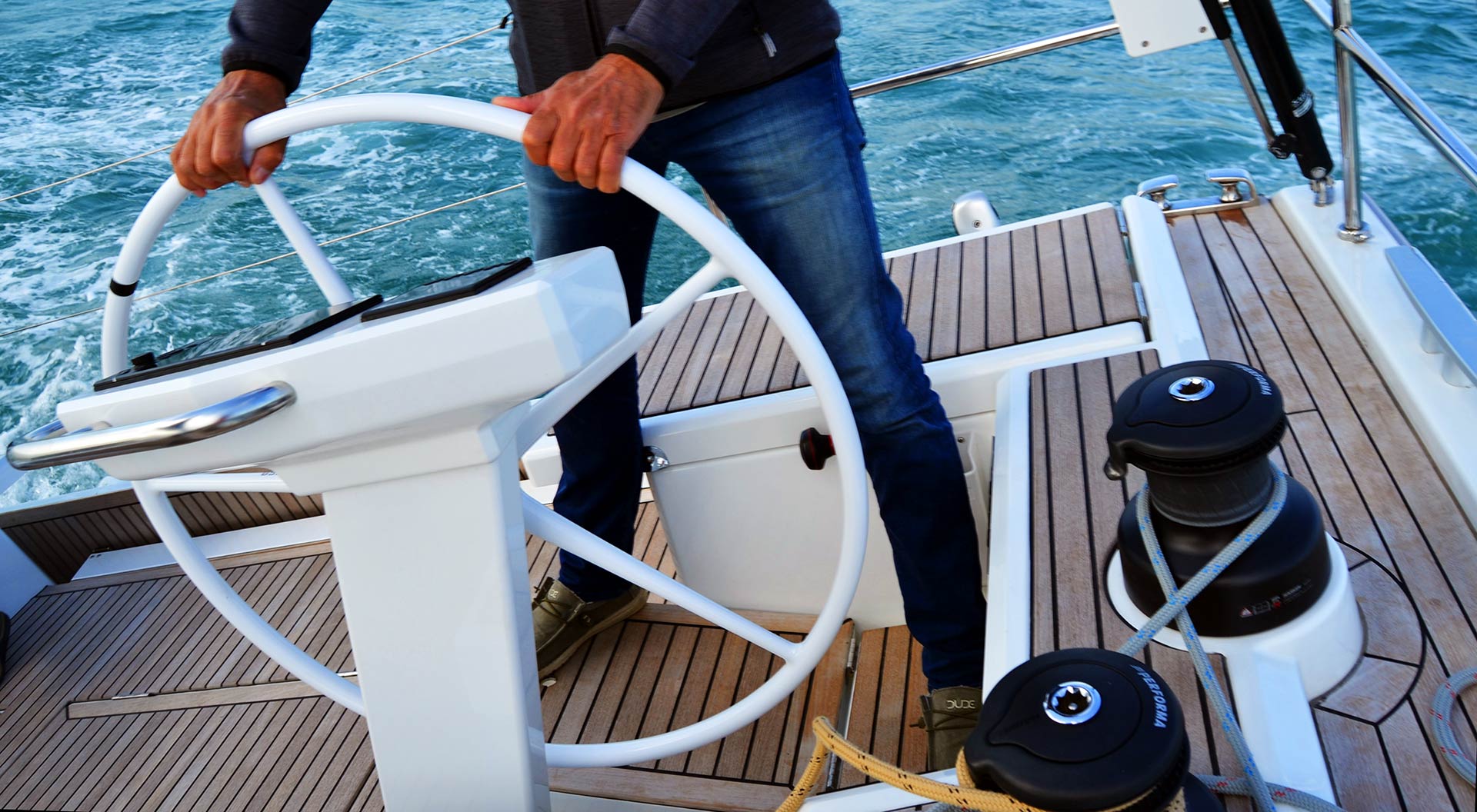
The Oceanis 46.1 “First Line” has a tall mast so that the angle of the split backstay is very big. Meaning that when steering in sitting position you will never have to duck underneath the backstay. That´s a plus. I remember being on the Dufour 460 and damning the backstay because you just coudln´t sit there as you would everytime have the backstay interfering with your head.
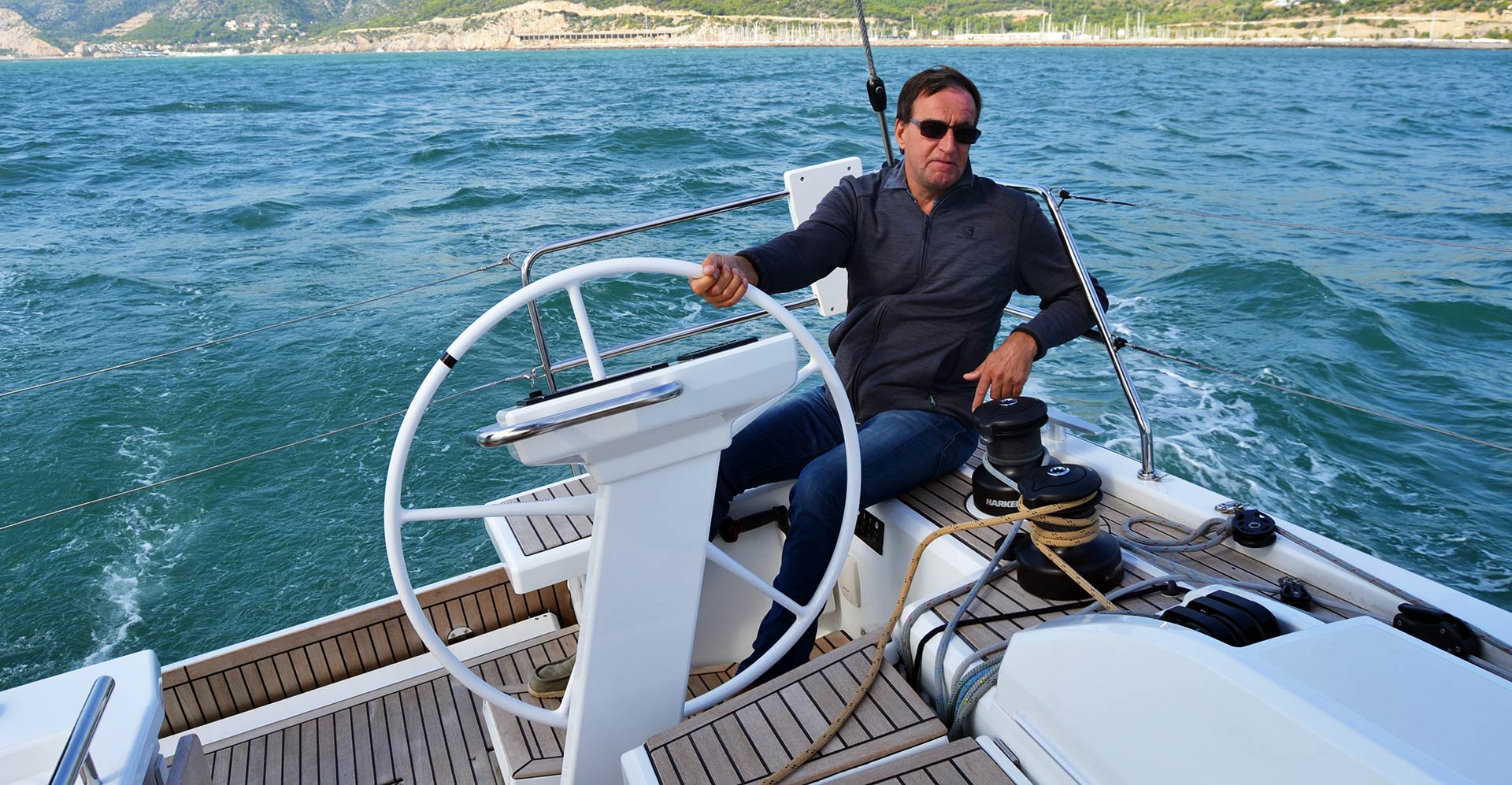
The sight to the bow is even better when sitting on the coaming: The wheel well within reach. On every point of view the double rudder blades had an impressively sensitive feel. Of course, the feedback from a rudder via quadrants, chains and cables of a wheel-steering is far from being as sensitive as a tiller-steering, but I felt no squabbling whatsoever and the response of the rudder was impressively fast and well-tempered – bot on high speeds as well as going slowly astern in the marina. Nice!
Modern layout of the running rigging on the Oceanis 46.1
Let´s take a look at the lines and the running rigging of the new Oceanis 46.1 that is, blunt speaking, adapted to the “modern” sailing taking place nowadays. That means, one or two are able seaman, the rest of the crew is guests on vacation. That´s a fact with sailboats nowadays and Beneteau reacted accordingly: All lines are running back aft right in front of the helming stations: Winches and jammers are within an arm length to be reached easily by the helmsman.
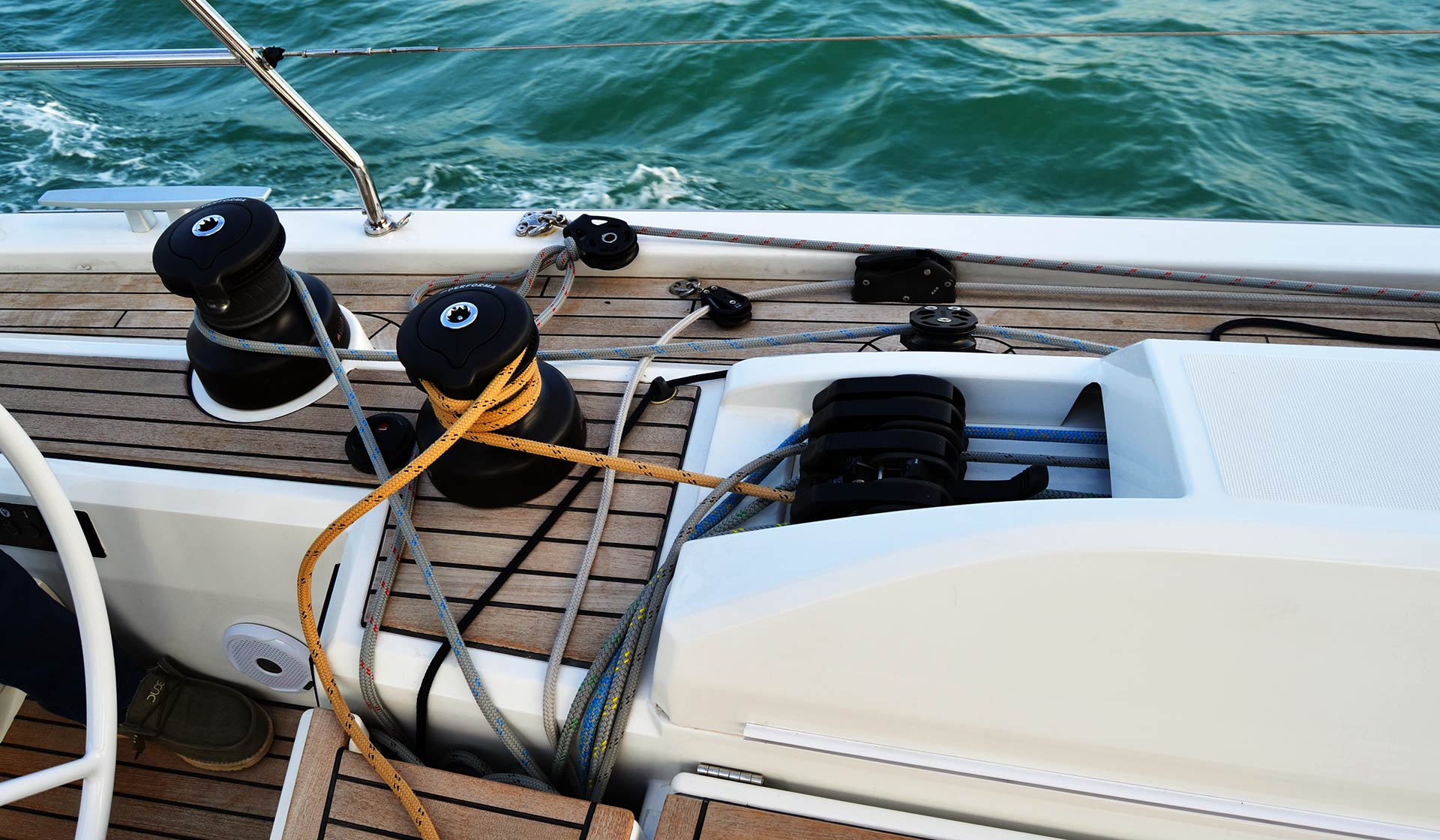
That´s two sheet winches on either side, meaning that although the boat is rigged with German Mainsheet System we have enough winches to have all sheets on their own dedicated winch at all times. That´s a plus over the Oceanis 41.1 for example, where you have only two sheet winches aft forcing the skipper to change mainsheet before any manoeuvre. Not so on the 46.1, wich I quite liked.
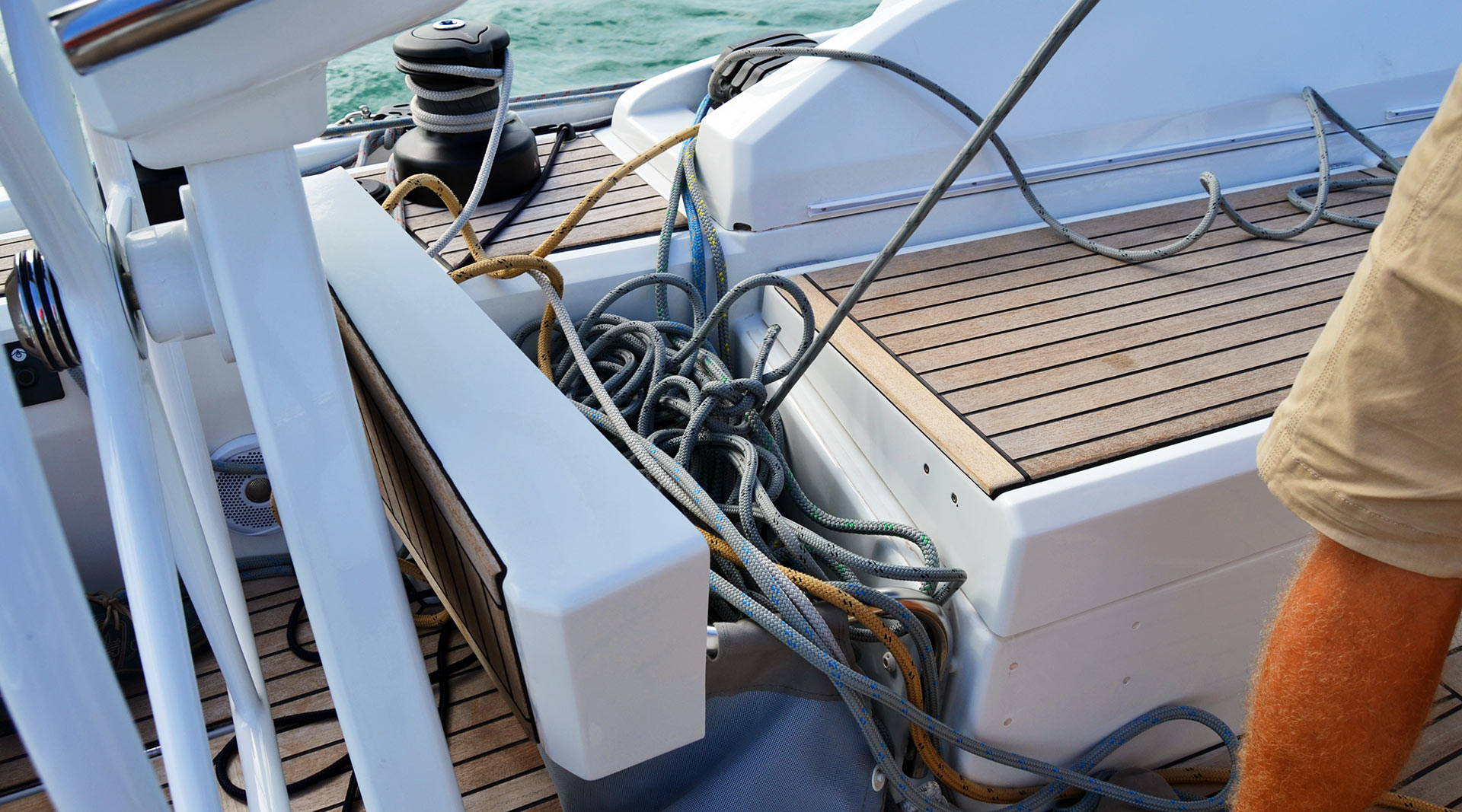
Lines are stowed in big boxes which are mounted at the end of each seating bench (comes as an option) and are put away nicely. No hassle with lines in the cockpits anymore! I already mentioned that I personally wouldn´t go for electric sheet winches for many reasons, where their impressive pricing is just one, but I must admit, their as well add to the easiness of sailing very much. In any case, I wouldn´t consider manual cranking on a 46-footer as being too hard to perform.
My verdict on the Oceanis 46.1: A dream yacht in the 46-48 feet class
So, after roughly one hour in big swell and decreasing wind conditions, having the boat sailed in first reef, we head back to Port Ginesta pontoon and I wonder how I could describe my feelings about this boat. I must say, I am pretty impressed by the stability and comfort the boat boats! I remember having a similar swell leaving Lisbon in a similar sized boat and turning seasick immediately. I found the Beneteau rather assuring, transmitting an aura of safety.
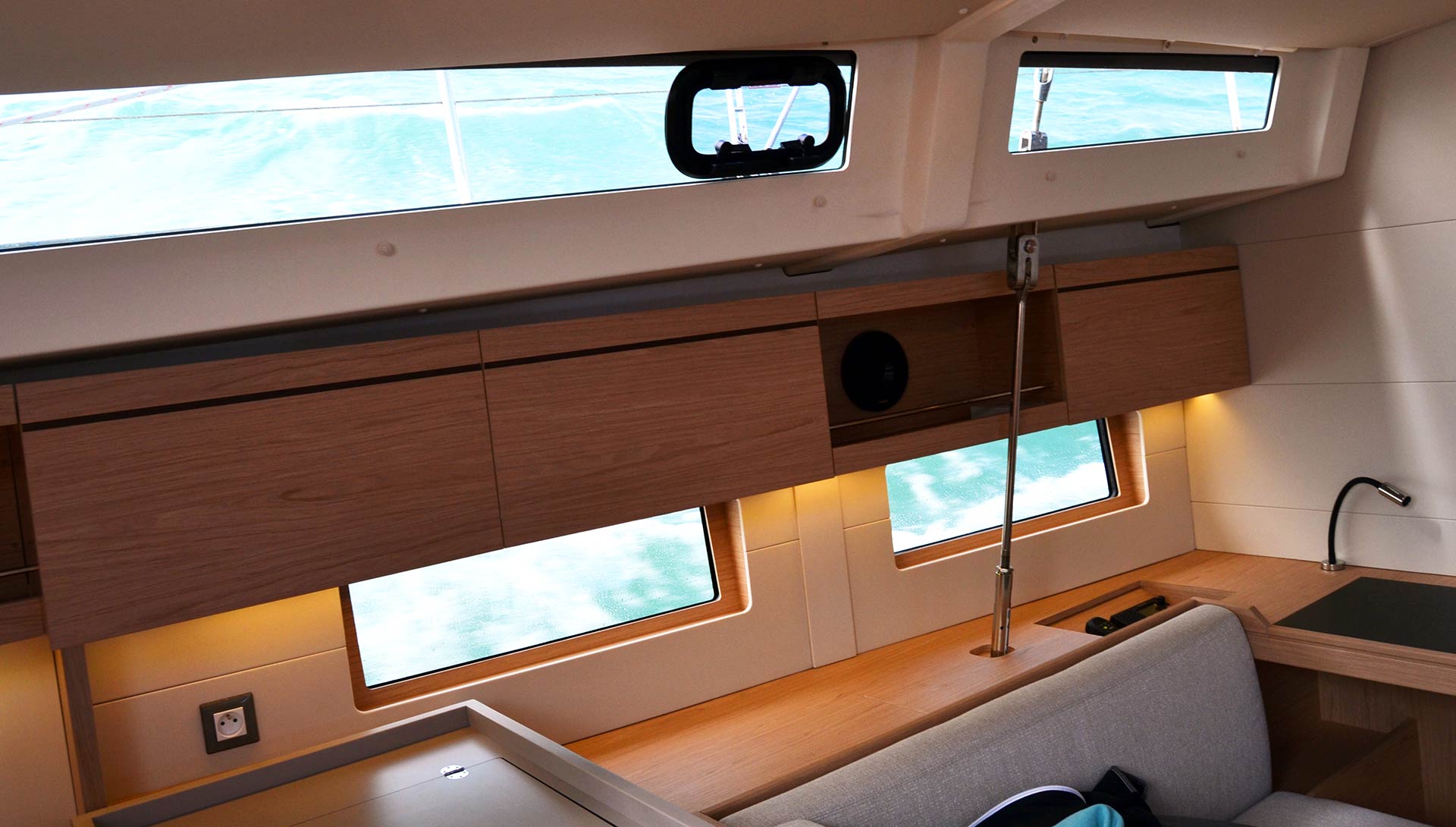
Her gentle motion though didn´t come with the price in decreased speeds. On either point of sail we easily reached the 7-knots-barrier and exceeded 8.5 knots occasionally. I recon in full canvas the boat is capable of making 9 to 11 knots without any problem. I was particularly impressed with her manoeuvering abilities: Docking the boat in slow speeds was a no-brainer. No discussion whether double rudders are inferior to single rudders in manoeuvres anymore!
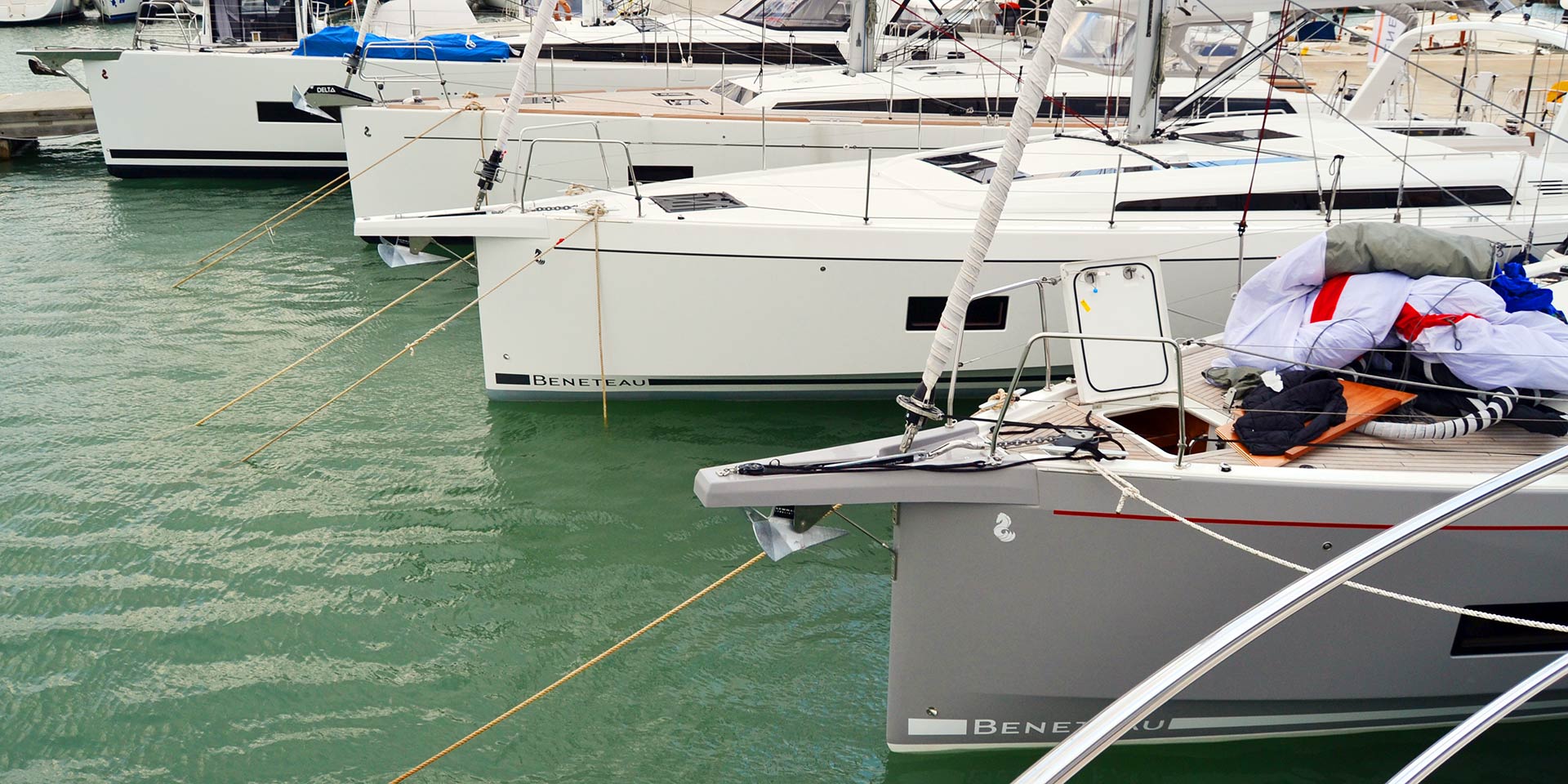
Having the boat tied up back on the pontoon I found some time to compare the latest entry of the Oceanis family to her bigger sister ships. For sure, the Oceanis 51.1 and 55.1 are far superior in any property to the 46-feet boat both in sailing and internal qualities, I could hardly find pro-arguments to go for the 50-feet-range over the Oceanis 46.1. Yes, she indeed is a bit smaller, but she offers a huge cockpit space, roughly the same area as her bigger sister ships. She has a huge owner´s cabin, a very, very nice salon and a galley even bigger than that of the old Oceanis 48!
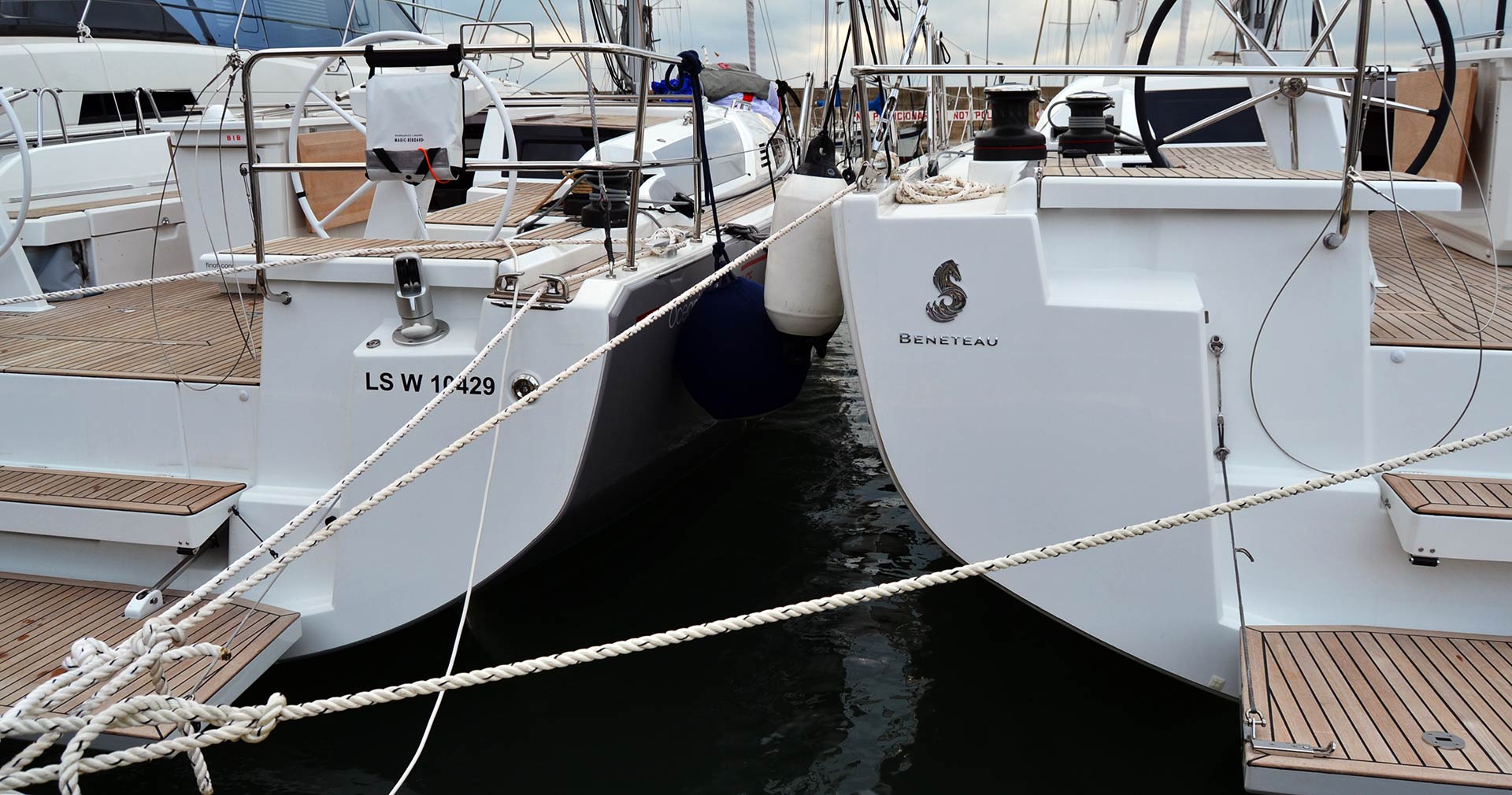
That said, the pricing of the 46.1 is interesting too: Starting at 225.000 Euro ex VAT an owner can have a boat like this one fully equipped and fitted like this one as “First Edition” for roughly 320.000 Euros (ex VAT) and go out. Of course, fitted with all gems like generator, AC, electric winches and all that stuff the price can skyrocket for sure, but as a starting point this offer is a very, very interesting one! That said, the yard representatives tell me that the boat´s production slots are sold out till January 2020. Wow.
Exciting news at Beneteau
So I leave the Oceanis 46.1 and I am pretty impressed by the outcome. She certainly is a serious cruising boat offering lots of space. The options list is sheer endless, meaning that the boat can be customized to fit every need of every sailor-type out there: The fast performance-seeking racer, the cruising family, the charter company. The current success of all the .1-Oceanis boats is a confirmation of my own observations. And the fact that Beneteau seems to have a run right now, is even more pushed …
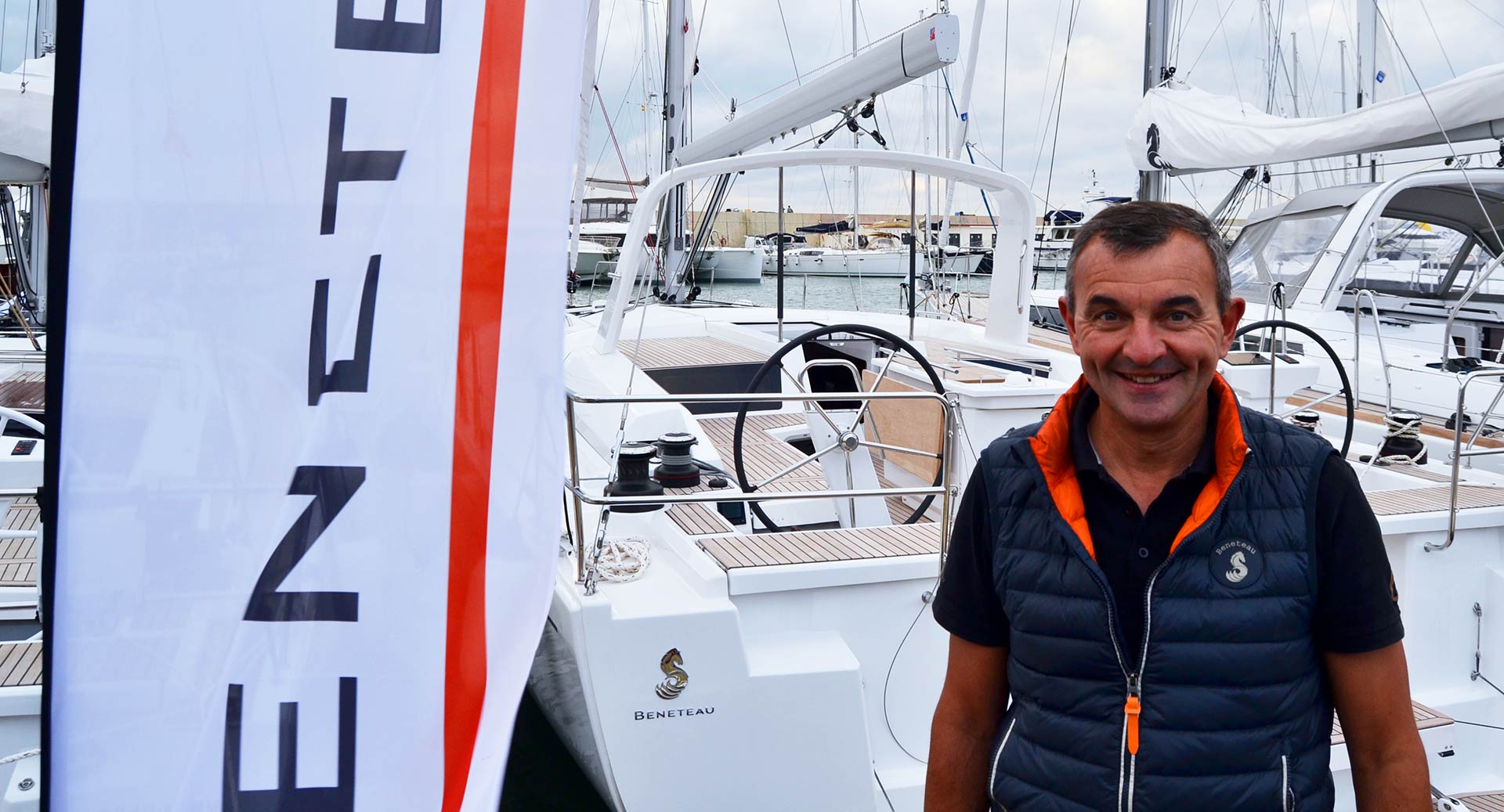
Upon leaving I am talking a bit on the brand´s future with Yves Mandin, manager of the Beneteau Premium Service. He is telling me that the Port Ginesta Sea Trial Base will enter regular service just this week. Meaning, that clients and people interested in acquiring a Beneteau can come here and test the boats (just like I did) anytime they wish. Which is a huge improvement and certainly something not every yard can offer in this quality.
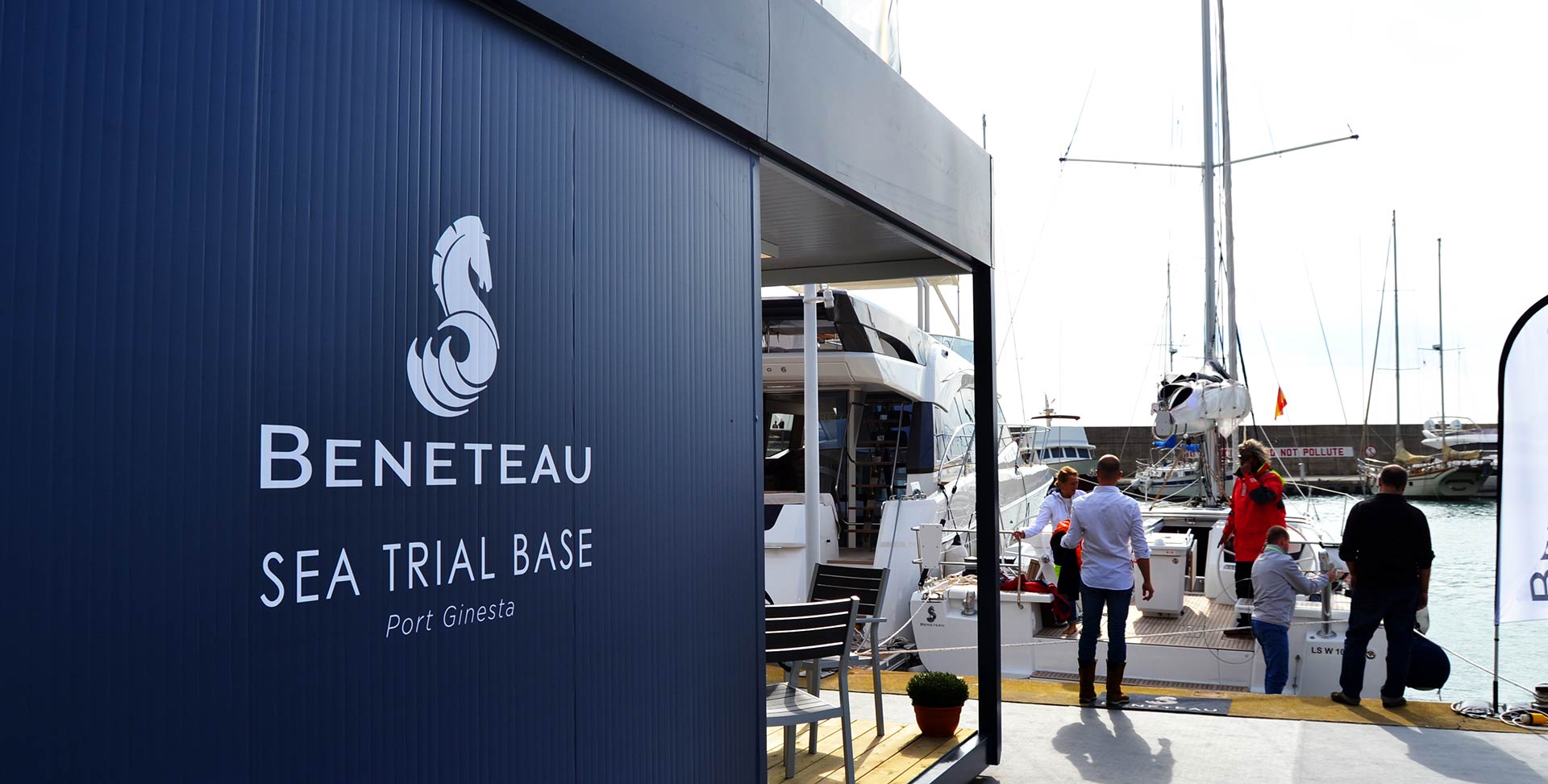
Of course I am a bit biased since I do work for a Beneteau dealer in Germany, nevertheless, that’s why I know how hard it is to provide clients with sea trials: You just cannot have all the boats available as a dealer and thus up to know our clients had to try the boats in charter or go to other dealers (which is obviously bad for us). Now, this new base is just perfect. And I have the feeling that I will be returning here more sooner than later …
Like to read more on the Beneteau Oceanis yachts?
Complete walkthrough of the Oceanis 46.1 in Cannes
Talking about the new Oceanis hull design & chines
In the Beneteau yard in France
